


















































































































Lately, I’ve been thinking about the interconnectedness of our community. I had a bit of time to ponder this while waiting for our January issue to be printed last month.
Though the “Shop Local” movement is nothing new, it’s been around so long now that I often take it for granted. That is until the blizzard of 2022 clobbered Buffalo. It was surreal hearing about the inundated city to our west, yet barely a dusting here in Clinton and a few inches around our region. But how did that affect us? Well, Mohawk Valley Living Magazine is now printed in Buffalo. Why would a business that promotes “shopping local” use a printer outside the area? About a year ago, our local printer informed us they could no longer produce our type of magazine. We were their last client to need that service. This brings me around to the local media. When our daily newspaper stopped printing its monthly glossy magazine insert, the cost for our printer to maintain a large, full-color printing press for just our magazine outweighed the need.
Though Mother Nature is not a business, she sometimes makes us realize how interconnected we are. For example, when there is no snow in December and January, our neighbors to the north suffer. No snow, no snowmobilers. No snowmobilers, no customers at local resorts, restaurants, and shops. The snow tourists and snow-loving locals buy gear, supplies, food, groceries, souvenirs, etc. Local snow-related businesses buy ads in local media. No business, no ads. No ads, fewer local media outlets. And that makes for fewer services that cater to local media. It’s a circle. Like farms and restaurants, lumberyards and homebuilders, printers and publishers.
And that is how a blizzard in Buffalo impacted our little business here in Clinton.
That reminds me, I have to renew my newspaper subscription! •
Riggie is roaming around and hiding in the advertising areas of the magazine. Next to him you’ll find a letter. Find all the Riggies and rearrange the letters to answer this riddle. Enter by the 15th of the month to be entered in a $100 shopping spree at one of our advertisers!

(Excluding media and banks) One entry per household per month. Mail to: Riggie’s Riddle, 30 Kellogg St., Clinton, NY 13323 or email: mohawkvalleyliving@hotmail.com
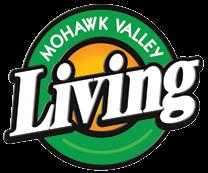
NOTE: Please enter Riggie’s Riddle and crossword puzzle in separate emails.
1 word, 15 letters
See the answer and winner to last month’s riddle on page 46!

Natty Bumppo goes by many names, Deerslayer, Hawkeye, and Pathfinder. But it’s what he wore upon his legs, That gives our region its moniker.
Hazelnut and one of the kits



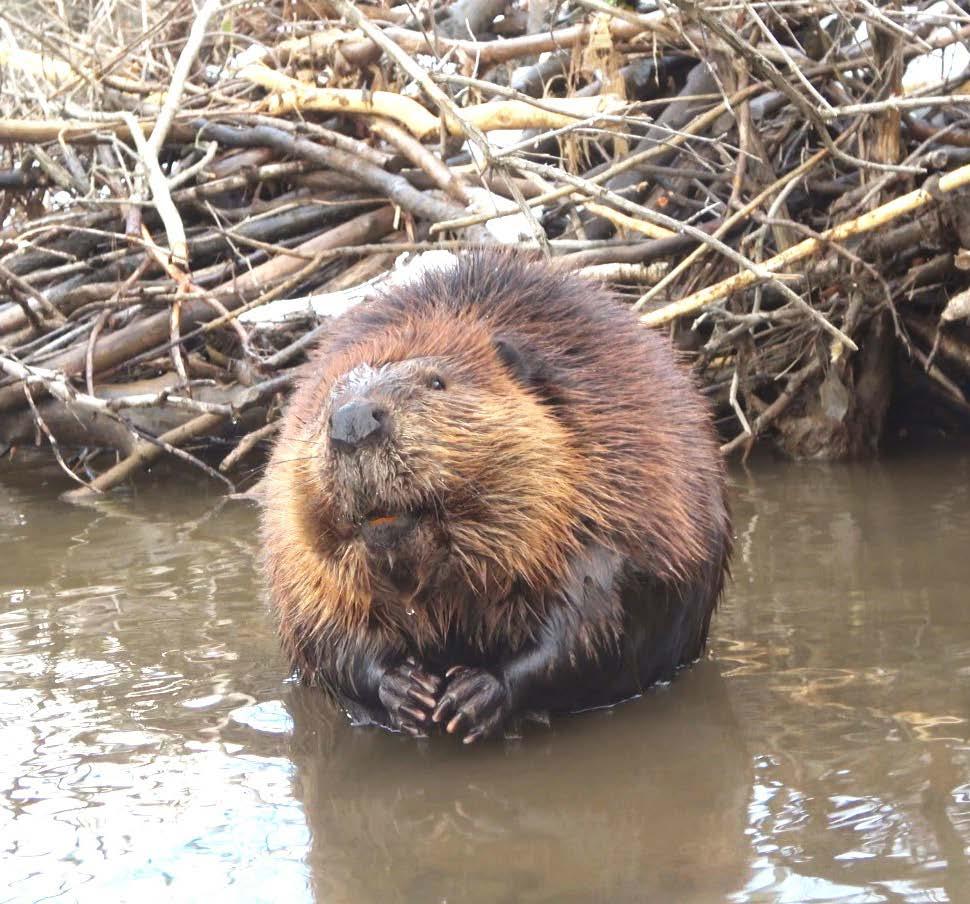
We resume our Beaver story where we left off last month.








On July 18th, it rained for the first time in ten days. Although our region had been experiencing a moderate drought, the beaver ponds did not suffer, and water levels remained high. Drought resilience is valuable service Beavers provide in an ecosystem. By maintaining water impoundments, they keep water on the land where it is available to other animals, plants, and people. Their ponds also help keep the local water table charged, which is of critical importance in times of drought. In the Amer-
ican West, where severe drought is commonplace, Beavers are recognized for transforming streams and rivers into durable wetlands systems. In the Mohawk Valley, where severe droughts are rare, Beavers don’t get as much credit for water conservation, but what they do to create and restore wetlands should not be undervalued.
By the start of August, we had experienced many hot and dry days. Precipitation was lacking. However, on the night of the 4th, storms delivered some much-needed rain. Dam maintenance had fallen off everywhere in the pond system except for the dam at Julia’s Pond. With a smaller labor force at their disposal, the Beavers had to concentrate on their most important tasks. This meant that food collection and the maintenance of their main pond’s dam would take precedence over other projects.
On August 14th, I was surprised to find three Beaver kits at the pond. Two had been feeding and playing when a third one popped out of the water! It was late in the season for me to be getting my kit count straight, but I assumed it was finally correct. The Beaver kits weren’t the only
triplets in the pond. They were sharing the habitat with three juvenile Green Herons.
On August 20th, there were three large Snapping Turtles at the pond. I was initially watching two partially submerged snappers slowly swim towards each other like a couple of menacing Crocodiles. I wasn’t sure if they were aiming to fight or have a romantic encounter, but at one point they stopped advancing and just floated on the water. Minutes later, a third Snapper of equal size climbed over the dam and swam over to join them. I noticed that one of the turtles was eating an apple. They weren’t so ominous after all; they just wanted
some fruit.
In late August, we had a few good days of rain. As it happened, there were no issues with stream flooding. Given how low we were on rainfall, it would take a great deal of precipitation to cause a flood. The entire Beaver colony was out on the morning of the 24th. I was watching Tippy and GenLo working on the dam when it struck me how uncommon it was to see our colony’s matriarch and patriarch chipping away on a project together. Typically, it would be the patriarch and some of his young apprentices working to maintain the

dam. What transpired to transform Tippy into a worker was unknown to me, but whatever the cause, her job description had changed.
In the morning on the first day of September, GenLo was with Tippy at the southeast shore of Julia’s Pond. I suspected they were starting a second lodge beneath a toppled Willow Tree. They hadn’t started making a pile of mud and branches, but they seemed to be diving down and perhaps excavating an underwater burrow. Having a second lodge in a primary pond would not be unusual and it has occurred before with this colony. While the adults were busy on one side of the pond, one of the new kits was doing some work on the dam. Young kits don’t often take on such responsibilities. More typically, when they make additions to dams, they are insignificant and they practice in the presence of a supervising sibling or parent.
The hedge of Orange Jewelweed on the dam at Julia’s pond was thick with thousands of blooms. On the water, wakes created by swimming ducks scattered the reflections of the orange flowers and the ripples shimmered with color. The lush blooms were a testament to the inadvertent horticultural skills of Beavers. Their dams and lodges are like raised garden beds. The
fresh mud used for their structures makes extremely fertile ground for plants to colonize. Plant seeds, like those of Jewelweed, are present in the silty mud the Beavers use.


On the afternoon of September 12th, GenLo was on the trail when I arrived. I tried to give him a giant sweet potato. I put it next to him but for some reason he couldn’t find it. I had to give him a replacement. He took the new offering and slowly waddled back to the pond with it. I tried to retrieve the other one, but Hazelnut got to it first. It was obviously too big for him, but he managed to haul it off. Later in the afternoon, Tippy and the kits were feasting on willow leaves. All three new kits were




 Tippy and kits have willow leaves
Tippy and kits have willow leaves
out at the same time, and then, to my astonishment, a fourth kit appeared! This meant that Tippy had four Beaver kits this season. It sure took me a long time to get that straight.


By mid-September, the Beavers stepped up their foraging efforts to provide for their expanded family. I couldn’t yet detect the start of a food cache, but it was likely they had begun anchoring branches into the mud on the bottom of the pond, thereby building the cache from the bottom up. Meanwhile, Tippy was working on the dam, thus confirming that her recent flirtation with construction work wasn’t just a passing fancy.

On the 20th, Hazelnut did some foraging in the afternoon. I watched him head up into the field and later return with a bundle of poplar whips. He entered the pond from a logging trail attached to the southwest corner of Julia’s Pond. Nearly every time Hazelnut uses that trail, he first dredges the underwater channel that leads up to it. Dredging makes the channel deeper and better to accommodate the trees dragged back into the pond. It reminded me of several years earlier, when the dam at Morton’s Pond had ruptured, completely draining the pond. With the water gone, I could see the topography of the pond floor, and it was far from flat and featureless. It was comprised of mounds and valleys. Indeed, Beavers don’t limit themselves to making dams and lodges; they also do extensive engineering on the floor of their ponds. They dredge out networks of channels to facilitate the movement of food and building materials. As Hazelnut beavered away on his channel, one of the kits spent a few minutes observing him. He then pitched in, mimicking his older sibling’s behavior and digging with his front claws.

On October 4th, I was surprised to find a dozen Canada Geese at Julia’s Pond. They were our resident breeders that had been away from the property since their failed nesting attempts in the early summer. Rod-

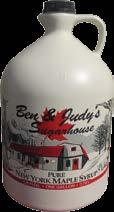 Juvenile Green Heron at Julia’s Pond
Juvenile Green Heron at Julia’s Pond
dy (recognized by his pale eyebrows) and his mate Lydia were among the group. Roddy almost came up to the shore for birdseed but was discouraged by Tippy who was coming to shore at the same time. He turned around and rejoined the other geese sitting on the opposite side of the pond.
By the second week of October, the foliage around the sanctuary was alive with color. The Sugar Maples and White Ashes were the show stealers, but they had some


competition from a few unlikely sources. Unexpectedly colorful was a Cranberry Viburnum Bush on the dam at Julia’s Pond, which took on a vibrant shade of burgundy.
In October, the new kits received names. Inspired by apple varieties, they were called Pippin, Mitsu, Fuji, and Tosh. Pippin was the boldest of the group, not afraid to waltz out of the water and take a treat from my hand. Tosh was also fearless and behaved similarly to her brother. Fuji was more hesitant about coming on shore and taking something from a person. Mitsu was the shyest of the bunch, typically remaining far from shore, even when her siblings were queuing up. She would only take treats remotely via the end of my ski pole. The kits were seen water wrestling on a few afternoons. For Beavers, wrestling is a shoving match. Two contestants face each other; they hold their heads cheek to cheek and propel themselves forward with their back paddle feet. Whoever successfully pushes their opponent backwards the farthest is the winner.
By mid-October, Hazelnut had become a true workaholic. On the 15th, he made multiple trips into the field to get Aspen saplings. Each time he dutifully dragged


them back to the pond and deposited them into the growing food cache. Sometimes he would sink the trees at the bottom of the cache, and other times he would lay them on top. Hazelnut also had become the primary lodge renovator. He was walking up the side of the lodge on his hind legs, carrying load after load of mud in his arms. It’s amazing how well Beavers can walk on their hind legs. Their large tail serves as a counterbalance and allows this bipedal gait. As it happened, Pippin had been watching his older sibling. He then began emulating him by adding his own modest contribution of mud to the lodge. Beaver kits learn what it takes to be a Beaver by observing their parents and older siblings.
On the morning of November 3rd, Tippy walked up the path and took all the branches I had assembled at the top of the trail. She was back looking for more when I arrived in midafternoon. She let me pass by her on the trail without getting apprehensive. I then stayed to watch her cut down a Pussy Willow tree. She felled it in less than a minute and then hauled it down the trail to the pond.
There was about an inch of snow on the ground on the morning of November 19th. The temperature had dropped into








the low 20s and ice was covering half of Julia’s Pond. That afternoon, the kits and GenLo were doing some ice breaking. GenLo was mostly busting the ice down with his weight, while the kits used the torpedo method of ice breaking, bashing up through it from underneath with their heads. Perhaps it had something to do with the quality of ice that day, but their ice breaking sounded like grenades going off. I honestly couldn’t recall hearing such dramatic ice breaking sounds in the past. On November 21st, Julia’s Pond was completely iced over. However, the ice was quite thin, and by mid-afternoon the Beavers had already broken it up around the lodge and the food cache.
On November 26th, morning temperatures were in the mid-30s, but by midday it was warmer. Hazelnut was bringing several loads of mud onto the lodge roof in the afternoon. For some reason he was traveling to the southeast part of the pond to obtain the mud for this work. Was it a special grade of roofing mud he was getting? It seemed especially good for plastering. Perhaps by using that specific mud on the lodge he accomplished two tasks simultaneously – channel dredging and lodge winterization. Indeed, multitasking is the Beaver way. After Hazel had added a few
loads of mud, he got hold of a large, peeled branch. He lugged it to the top of the lodge and carefully wove it into the roof structure. He then brought over two more loads of imported mud and used them to cement the branch in place.
On December 5th, the temperature dropped below freezing and ice covered half of Julia’s Pond. Once again, the ice was thin, and the kits relished the opportunity to break it up. By afternoon the temperature had risen into the 40s, which helped speed up the ice removal process. As for Hazelnut, he didn’t slow down on his lodge work. He toiled away at it as though he faced a deadline, and, in a real sense, he did. Once the pond was completely iced over, all work on the dam and lodge would end. Taking a break from working on the lodge, Hazelnut walked up the hedgerow trail and resumed trying to cut down the hawthorn tree. Interestingly, one of our resident deer stood quite close to where he was working. Hazelnut didn’t mind having an audience.


When not snatching the Beavers’ produce or eating the birds’ seed, the resident Muskrats at Julia’s Pond liked to sit on top of the Beavers’ food cache, nibbling on branches. Interestingly, even though the Beavers may not be protective of their food, the Muskrats are. In fact, one individual was repeatedly chasing ducks away from the apples and birdseed. When in pursuit of a duck, this female Muskrat ran on the water like a little speed boat, accelerating and paddling up a spray behind her. The ducks weren’t
flying away, but they did swim quickly out of her way. The ducks were in no real jeopardy from the Muskrat. I think it was more of a game to them, illustrated by the fact that they always come right back.
A winter storm on December 15-16 dropped eight inches of heavy, wet snow. Many trees around the sanctuary were weighed down by snow load. Julia’s pond, already largely iced over, acquired a thick layer of slush. When I got there in the midafternoon of the 16th, I could see that Beavers had already broken through the ice in a few places including by the main path over the dam. It looked like the water level had dropped at least a few inches, but it was hard to tell for sure given all the snow and slush. I thought perhaps there was a dam rupture – a slow leak. However, if there was a leak, it had to be high on the dam since the water level didn’t perceptibly drop while I was there. All Beavers came out as usual that day.
Strong winds and a few inches of snow came on the 23rd and 24th. The temperature fell into the single digits, and the wind chill was below zero. The Beaver ponds were covered with thick ice. On the afternoon of the 23rd, all the Beavers had come




out despite the arctic conditions. By contrast, on the 24th, only Hazelnut and the kits came out in the afternoon. On Christmas Day, only a single Beaver kit emerged from the ice hole, and soon retreated without taking any treats. Apparently, they were spending their Christmas inside the lodge this year. The branches I left around
the ice hole were not taken for several days.
A warming trend occurred during the last three days of December. The snow melted, and Julia’s Pond began losing its ice cover. By the 31st, it was one-fourth open. The Beavers did not come out for a few days, but on the 29th, the kits and Hazelnut began emerging. As the ice broke up and disappeared, the Beavers started taking their treats and branches again. On the afternoon of the 30th, all the Beavers, including both parents, came out. After finishing their potatoes in the lodge, Tippy and GenLo emerged together but didn’t stay out. I wondered if the breeding season was underway for them. Typically, the Beavers’ breeding season begins in January. When it does, we usually see a change in behavior with the colony patriarch.
We ended the 2022 season with the Beaver colony consisting of seven members: Tippy and GenLo, their yearling (Hazelnut), and the four kits born in the spring.

Friday, February 3, 7:30pm
The first classical guitar quartet entirely devoted to new music.



Friday, February 10, 7:30pm
One of the most captivating artistic voices of our time. A budding superstar in the classical realm, she is also a highly acclaimed fiddler in the tradition of her native Kentucky.
The Beavers now head into the heart of winter with a well provisioned food cache, a fully winterized lodge, and a good sturdy dam. 2023 will mark my 24th season monitoring Beavers at the Spring Farm Nature Sanctuary. What began in the summer of 1999 as a few chance encounters with a pair of homesteading Beavers blossomed into a lifetime of interspecies friendship and a profound lesson in wetland habitat restoration. I can sincerely recommend to anyone to allow Beavers land, water, and time, then watch what they do with it. You won’t be able to help being amazed and delighted by these most genial and competent aquatic engineers. •
Tickets by phone or online $20/$15/$5 General/Senior/Student
In celebration of the Kirkland Art Center’s 60th anniversary, it has launched its first capital campaign in 30 years. The campaign will address two top priorities:
1. Make urgently needed renovations and repairs to the roof and windows.

2. Build anew culinary arts program in response to community interest.
Help preserve this cultural anchor for the Village of Clinton and Town of Kirkland. Invest in the next 60 years of exhibitions, art and dance classes, concerts, performances, and community events that help make Clinton and Kirkland a desirable place to live, work, and study.
















































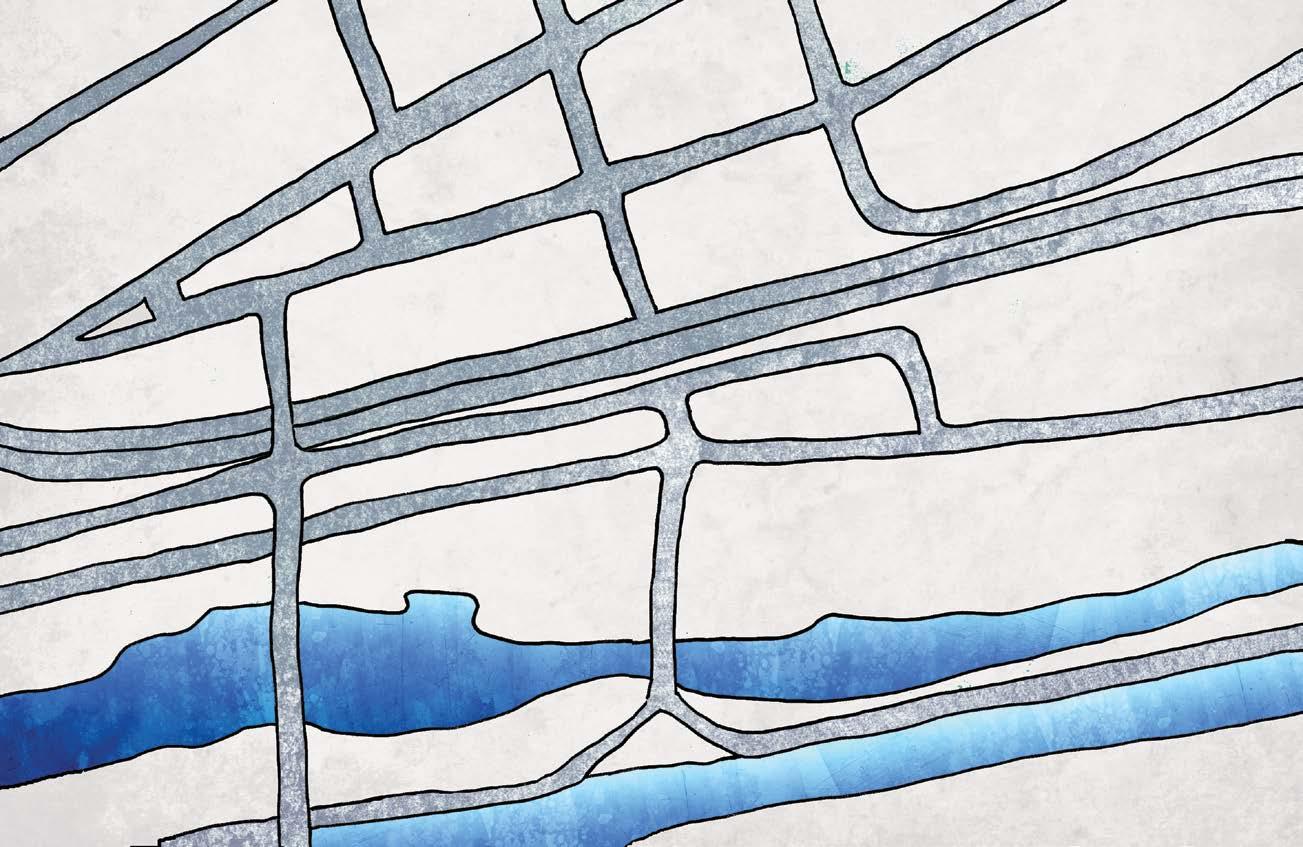

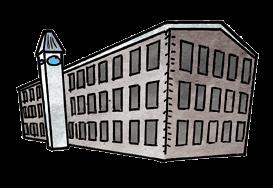
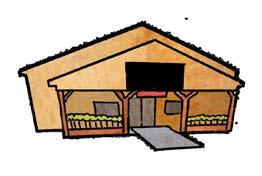
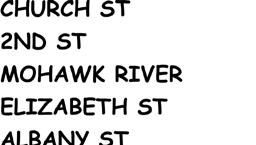













































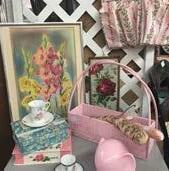








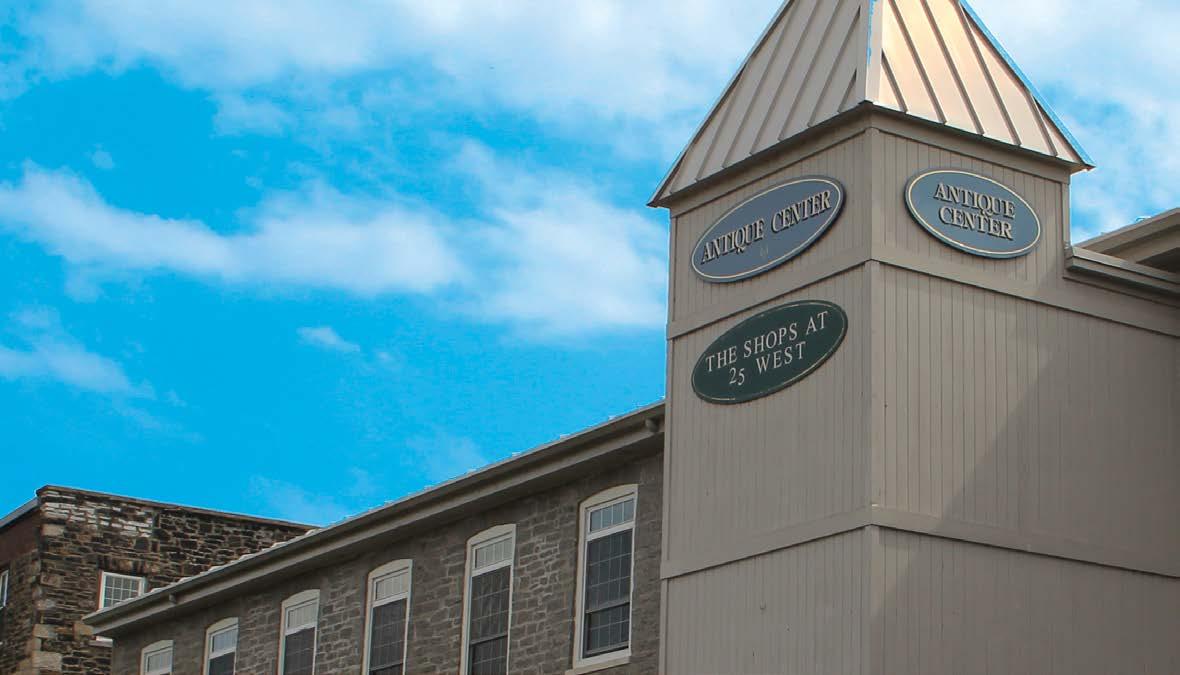






Going out into nature in February can be challenging, but if you settle on the right mode of travel, you may discover that it’s among the most enjoyable times of the year. In my early days of winter birding, my preferred method of getting around in the snow was using snowshoes. I had was bequeathed a pair of snowshoes that looked like they were fashioned by a mountain man or by someone who re-caned wicker chairs. As it happened, once I replaced the incomprehensible bindings, the antiquated contraptions worked rather well. Although they offered no real traction on ice, the flotation they provided on deep snow was quite good and better than any modern pair of snowshoes I’ve since used.
Snowshoes work by distributing your weight over a greater surface area. Generally, the heavier you are, the larger your snowshoes should be, thereby affording you the most flotation on the snow. People were mimicking nature when they devised snowshoes. Animals like the Snowshoe Hair, the Lynx, and the Fisher, all have wide feet that enable them to move on top of the snow with relative ease. Evolving this feature has allowed them to survive in the harshest environments of the far north and mountainous regions.
Generally, when the snow is deep, snowshoe use, modern or old-style, is far better than not using them. Walking in deep snow with only boots can be extremely tiring and



not conducive to a pleasant experience in nature. I’ve purchased two sets of snowshoes since that original mountain man pair, and both came with advantages and drawbacks. The modern ones were steel rimmed with plastic decks and metal crampon teeth that provided traction on ice. Indeed, you could practically walk vertically up the side of a glacier with my newest pair. Admittedly, this is not something I’m likely to attempt, but it’s better to have a product overqualified than underqualified for the job. My new pair has so many sets of metal teeth fastened to its base that I’m afraid of accidentally stepping on some unsuspecting small animal and cutting it in half. However, that is not the primary reason I neglect my snowshoes. It’s because they are cumbersome and pokey. When I’m wearing them, I can almost never forget I have them on, which is a big drawback. When I’m out in nature, I don’t want my method of transportation to eclipse my reason for being outdoors. For me, the best purpose for snowshoes is to break trails – trails that can then be used for cross-country skiing and will help animals get around in the woods.
For more than twenty years, I’ve been using cross-country skis to traverse our na-


ture preserve in winter. It is by far my preferred method of traveling on snow. They work for breaking trails if the snow depth isn’t too great. Once there’s more than two feet of new snow, it becomes too cumbersome to walk with skis on, and the trails need to be broken by snowshoes. I use skis often – sometimes every day for consecutive weeks or months. If there is navigable snow, I will try to use them. Of course, my idea of navigable snow usually differs from other people’s. I will ski if there is only an inch of snow on the ground and it’s interrupted by icy spots, mud puddles, and patches of grass. The consequence of my heavy use has caused me to go through skis, bindings, and boots far faster than the average skier. I purchased my first pair of cross-country skis 23 years ago. My former partner and I were outfitted at the same time and, over the course of several years, I watched my skis get progressively more destroyed while hers remained in pristine condition. Of course, the fact that she didn’t ski more than a few times a year had much to do with it. Regardless, I
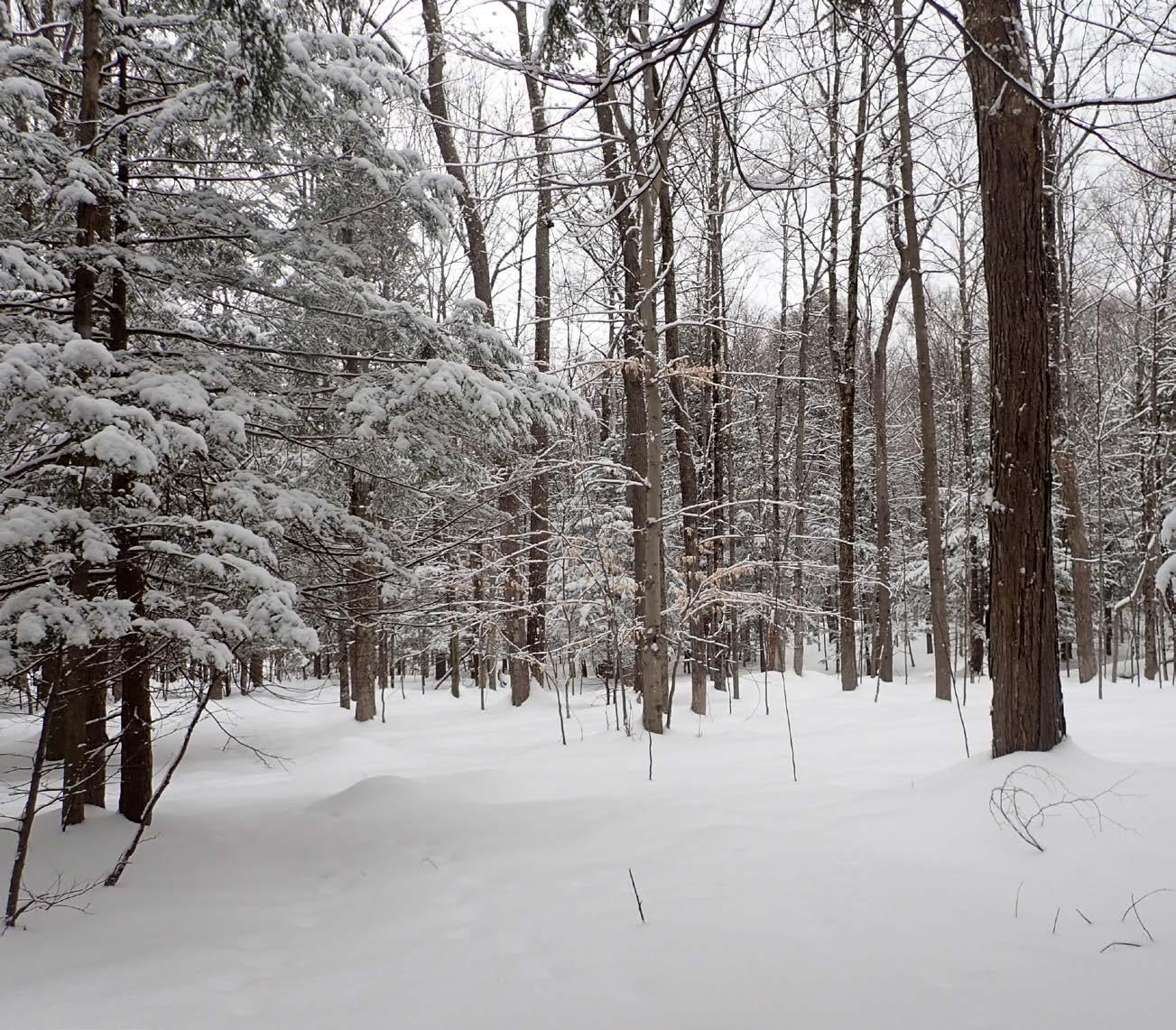
went through three pairs of skis, six sets of bindings, ten pairs of ski boots, and innumerable ski poles, all while her original gear looked like it was purchased only the day before. Her ski poles would have still been good too, if I hadn’t kept borrowing them after I broke mine in half or twisted them into pretzels. I recall buying her some new poles at one point and then having to borrow those too after destroying yet another set of mine.



























What I like about cross-country skis, is that they offer the most efficient and effective way to get around in winter. Sliding over snow is certainly easier than walking on it. Also, employing your arms as well as your legs to propel yourself makes for even greater proficiency of movement. Keeping warm is almost never an issue when skiing since it is an intense workout. As a matter of fact, I will have to remove layers and even take off my gloves due to overheating. The drawbacks of skiing mostly relate to the particular snow conditions that sometimes occur. With the wax-less skis that most of us use, they begin to stick on the snow when the temperature is between 27 and 32 degrees. There are waxes that can be used on “waxless” skis that alleviate this problem, but sometimes conditions change after you’re already in the field, and then you’re left to grin and bear it. Trying to walk with skis that are sticking to the snow is a miserable experience. My other complaint about skiing has to do with the ski boots. In recent years I’ve come to use skis, bindings, and even poles that are hardier and can take a lot of punishment, but that is not true of the boots. I can’t get more than two seasons out of

a pair without them cracking to pieces. I usually put up with broken shoes for a season before committing to replacing them, but it is no fun to have wet and/or cold feet while skiing. If there is by chance a ski boot manufacturer reading this column, see what you can do about this problem, and I would be forever grateful. Whether you are looking for birds, identifying trees by their bark, or searching for animal tracks and signs, there is much to discover in the February woods. If the snow is deep, try using snowshoes. If you’ve mastered that, try cross-country skiing. If you make it easier for yourself to get around, you can concentrate more on the adventure and on what you can find. •

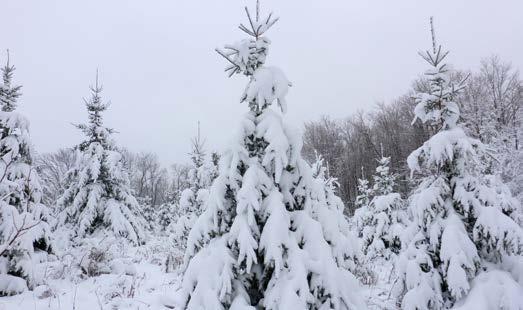
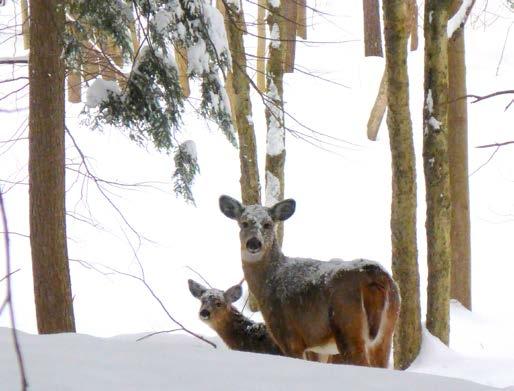





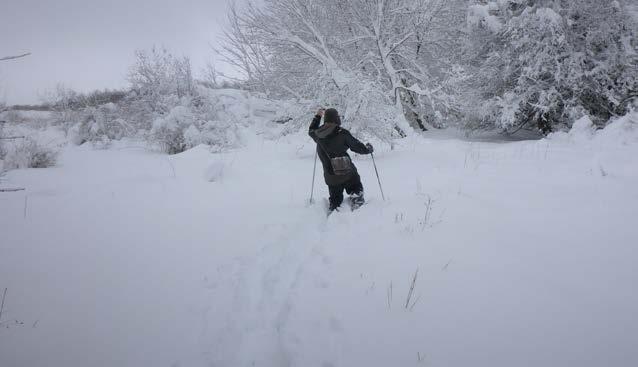

 part two by carol higgins
part two by carol higgins

Last month we reviewed the early space program and the important role the Space Shuttle missions played in America’s human spaceflight efforts. This month, we focus on the crowning achievement of those activities – the International Space Station (ISS). Did you know that humans have been living in that laboratory in space every minute of every day since the first crew arrived on November 2, 2000?
ISS is the world’s premier research facility. It zooms along at 17,500 mph and 250 miles above Earth, making one complete orbit of our planet in 90 minutes. During that time, crews experience 45 minutes of daylight and 45 minutes of darkness, seeing 16 sunrises and 16 sunsets every day. Temperatures outside reach 250 degrees Fahrenheit (water boils at 212 degrees F) when in sunlight and minus 250 degrees Fahrenheit during darkness.

The station is truly an international collaboration, comprised of 15 partner countries within five space agencies: NASA, Russia’s Roscosmos, Japan Aerospace Exploration Agency (JAXA), Canadian Space Agency (CSA), and European Space Agency (ESA). Currently seven crew members are onboard: three NASA astronauts (Nicole Mann, Josh Cassada, Frank Rubio), three Russian cosmonauts (Sergey Prokopyev, Dmitri Petelin, Anna Kakina), and JAXA astronaut Koichi Wakata.
The size of a football field, ISS has

16 pressurized modules where crews live and work. Inside are high-tech experiment stations, life support systems, two kitchens, a gym, sleeping quarters, bathrooms, eight spacecraft docking ports, over 50 computers, over 350,000 sensors to monitor the station, and more. Astronauts usually stay for a 6-month mission, transported by either a SpaceX Crew Dragon spacecraft under NASA contract or a Russian Soyuz spacecraft. The vehicle stays docked until its passengers are scheduled to return home. Crew supplies, equipment and experiments are regularly delivered by four cargo vehicles: SpaceX Cargo Dragon, Russia’s Progress, Northrop Grumman’s Cygnus, and Japan’s HTV spacecraft.
For researchers, the station offers unique opportunities to create innovative experiments. In space, people and objects float, and the microgravity environment creates profound differences in many sciences, such as physical and biological processes, fluids surface tension and flow, heat transfers, fire and combustion, and changes in organisms (viruses, bacteria and cells). Impacts on crews include muscle and bone loss, circulation issues, vision changes. Experiments and materials are provided by NASA facilities, research centers, pharmaceutical and commercial companies, and universities.
Crew members perform the experiments, and results are sent to the originators. Over the years, those efforts produced


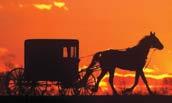
many breakthroughs. Examples include new Osteoporosis medications, advances in research for Alzheimer’s, Parkinson’s, Cancer, and Heart disease, robotic surgery devices, portable ultrasound equipment, and water purification systems.
In addition to research, astronauts are busy every day. They maintain all systems to keep the station running efficiently and safely, including occasional spacewalks, exercise two hours daily to mitigate bone and muscle loss, and participate in personal medical tests designed to keep future crews healthy.
On February 20, an unprecedented event will occur. An empty (no crew) Russian Soyuz MS-23 spacecraft will autonomously dock to ISS. Why? On December 14, 2022, a micrometeoroid travelling 15,600 mph punctured a coolant line on the Soyuz MS-22 spacecraft that docked September 21, 2022 carrying two Russians and a NASA astronaut. All coolant emptied into space. Russia deemed the spacecraft unsafe for crew and is sending the replacement MS-23 vehicle. Current plans call for an extended mission, returning the crew to Earth in September.
The arrival of the replacement vehicle and unusual shifts in crew schedules will be notable in the history of human spaceflight. Visit the www.nasa.gov website for updates and for viewing opportunities when ISS will be visible in your night sky.
Wishing you clear skies! •
Hanny’s Voorwerp. Image Credit: NASA, ESA, W. Keel, Galaxy Zoo Team Mohawk valley astronomical society

































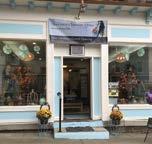




Answers found in the pages of this magazine! Solution will appear in next month’s issue
Across

3. A gateway to knowledge.
6. The improved “2.0” version of this hotel in Cedarville.
9. Farmer Suzie says she and other farmers rely heavily on this of the five senses.
11. You owe me a Coke!
12. An annual fixture of the Saranac Lake Winter Carnival. (2 words)


14. Like a fox.
15. The crowning achievement in human spaceflight efforts.
16. The hub of Forestport on the weekends. See page 37.
Down
1. Not the fun kind of snow.
2. This community leader and Utica’s first Black dentist was inducted into the Oneida County Historical Hall of Fame in 2022.
4. Peggy quotes this famous first lady who wrote “. . . Today is a gift. That’s why we call it ‘The Present.’”
5. Richard Enders was invited to but missed the inauguration of this president.
7. You will often find this jeweler with magnifying visors on her head as she specializes in jewelry repair. See page 29.


8. What this time of year might be if you own your own business.
9. What you draw when no one wants to do a chore.
10. The name of this florist on page 18 means “beautiful.”
13. Richard Enders was known to have this kind of sarcastic wit.
MVL Crossword Puzzler:
A “crazy” way many people “kick off” Utica’s St. Patrick’s Day Parade. (2 words)
Unscramble the letters in the yellow boxes then email your answer to: mohawkvalleyliving@hotmail.com by the 18th of this month.

You’ll be entered to win an MVL Mug and a bag of delicious, fresh-roasted FoJo Beans coffee! Answer and winner to last month’s puzzle on page 46.








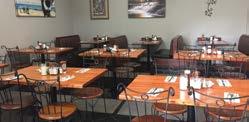
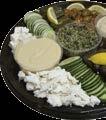


Through February 25, 2023
The Other Side
2011 Genesee St., Utica, NY www.theothersideutica.org
Hours: Thurs: 12-3pm, Sat: 12-3pm or by appointment



Jules Olitski: Late Works

Through March 3, 2023

Exceptionally prolific artist Olistski worked through a range of disparate styles, often alternating between austerity and excess.
The Sam & Adele Golden Gallery
Golden Artist Colors 188 Bell Rd., New Berlin, NY www.thesagg.org
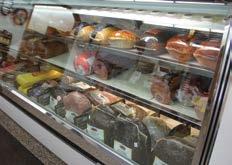

Through March 26, 2023
Flowers,TreesandRoots:

Wild World of Plants
This exhibit explores all manner of rendering plants: their habitats; their shape, form, color and uses; their symbolism in religion; their medicinal properties; and more.
TheArt&ScienceofBotanical Illustration
Juried exhibit of botanical art
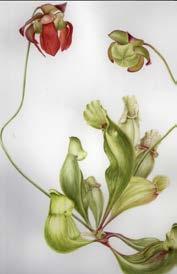
Precaria:Disturbanceand Dislocation,SculpturalWorksby JackElliott

Work that express relations between trees, people, and our shared environment.



3273 Rt. 28, Old Forge, NY (315) 369-6411 viewarts.org


Having an art opening? Let us know for a free listing in our monthly guide! Email: mohawkvalleyliving@hotmail.com


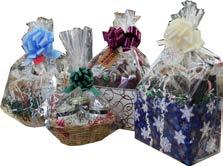
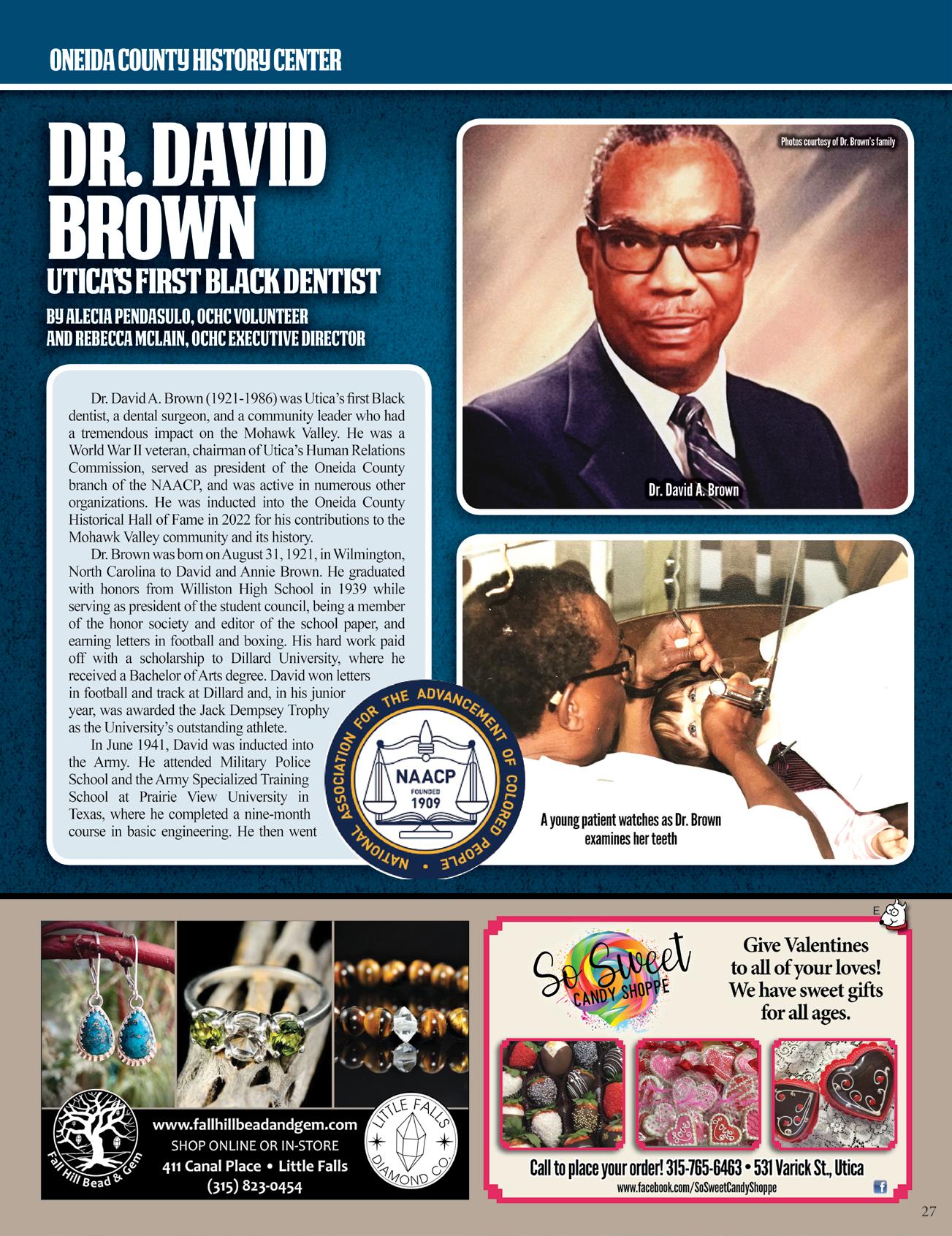
overseas with the 92nd Infantry Division assigned to the Italian campaign of World War II. After the war, David took a three-month course at the University of Florence before returning to the United States and re-entering Dillard University. He obtained his Doctor of Dental Surgery degree from Meharry School of Dentistry in 1952.



In 1953, after completing internships at Eastman Dental Dispensary and Strong Memorial Hospital, Dr. Brown moved to Utica (into the home of Edward Bass, a 2009 Historical Hall of Fame inductee). He became Utica’s first Black dentist and opened his practice at 402 Court St, later moving it to 1402 Genesee St. He was referred to as the “painless dentist” by his patients and





of the Board of Head Start. He was a member of the Frontiersman International, the Advisory Board of SUNY College of Technology, and was active with the Utica Kiwanis Club, the Utica YMCA, American Dental Association, New York State Dental Association, and the Oneida Herkimer County Dental Society.
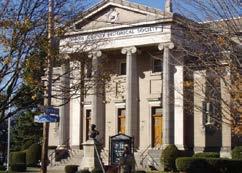






In 1977, Dr. Brown was honored with the Alumni Award at Meharry Medical College for 25 years of service in healthcare, and he was named 1982 Man of the Year by the Utica Citizen’s Lobby. When Dr. Brown passed away, Mayor Louis LaPolla was quoted, “there has never been a person with more of a sense of love for a community than Dr. Brown.” •

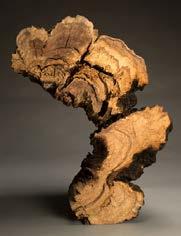



 by Gary VanRiper
by Gary VanRiper


1897. That’s the year given for the launch of the Saranac Lake Winter Carnival in Saranac Lake in the northeast corner of the Adirondack Park.




1898. A year later, the famous Winter Carnival Ice Palace was first featured in the event.

1954. This is the year the Ice Palace became an annual fixture. (It also happens to be the year I was born, but alas could not find any historical connection between the two events.)
Rob Russell is the vice-president of the committee helping oversee activities including the main attraction. There is a theme every year for the Carnival, and Russell revealed this year’s theme is, “Roman Around Carnival,” a play on words. “It (the Palace) is going to be a replica of the Roman Colosseum,” he said.
The blocks are harvested from Lake Flower’s, Pontiac Bay. “It takes about 7-10 days to erect a Palace,” Russell explained. Mother nature also play a key role, since the weather determines the size of each block. “The thinner the ice, the more blocks it takes,” he said, noting also that there were years they had to dismantle what had been build and start all over again.

2023. The official opening day for this 2023 Carnival is Saturday, February 4. It includes fireworks at the Palace, which is also lit every night throughout the week.

If you miss the opening fireworks display, not to worry. The Gala Parade which easily draws several thousand people the following weekend on Saturday is followed on Sunday with yet another fireworks display bringing all of the week’s many activities to close.
Russell also said those who are there that final day are also treated to “a mammoth slide show on a screen next to the Palace just prior to the fireworks going off.” The show features photos taken through the event from the ice harvest until the final hurrah.

I have known Andy Flynn for many years and actually once hosted a segment of Adirondack Journal with him as a guest on the Mohawk Valley Living television show. Currently Editor of the Lake Placid News, he is a prolific writer and is the author of the 440-page volume, Saranac Lake Winter Carnival Memories. Copies are hard to come by today*, but I have one in my personal library of Adirondack volumes. He wanted to write about the first day of Palace construction and so became personally involved early on in the process.

It was 8 degrees below zero the year he helped out. Arriving in the early morning, he signed the volunteer sheet and was handed an IPW (Ice Palace Workers Local) 101 sticker. “I felt like one of the gang,” he writes. Being an unskilled worker,






he went for a pike pole which is used to guide the cut blocks of ice along a cleared channel working them to shore. By noon he was tired, but by that time many more volunteers were there to help.

I was stunned what I found out while interviewing Russell regarding this use of volunteers. “Back in the early 1900’s, they used architects to draw the Palace construction,” he said. Today? “100% volunteer, he said. “It has been for some time.” And not only the Ice Palace is run by volunteers - the entire Carnival happenings as well!




For those interested in attending, a complete schedule can be found at www. saranaclakewintercarnival.com/schedule


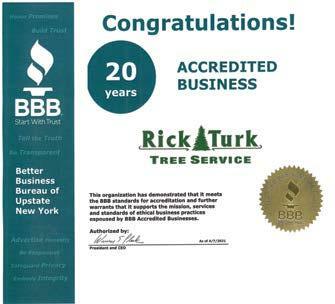

My wife Carol and I plan to be there this year on opening weekend. Maybe we’ll see you at the fireworks and we’ll all add another page to our Adirondack journals! •




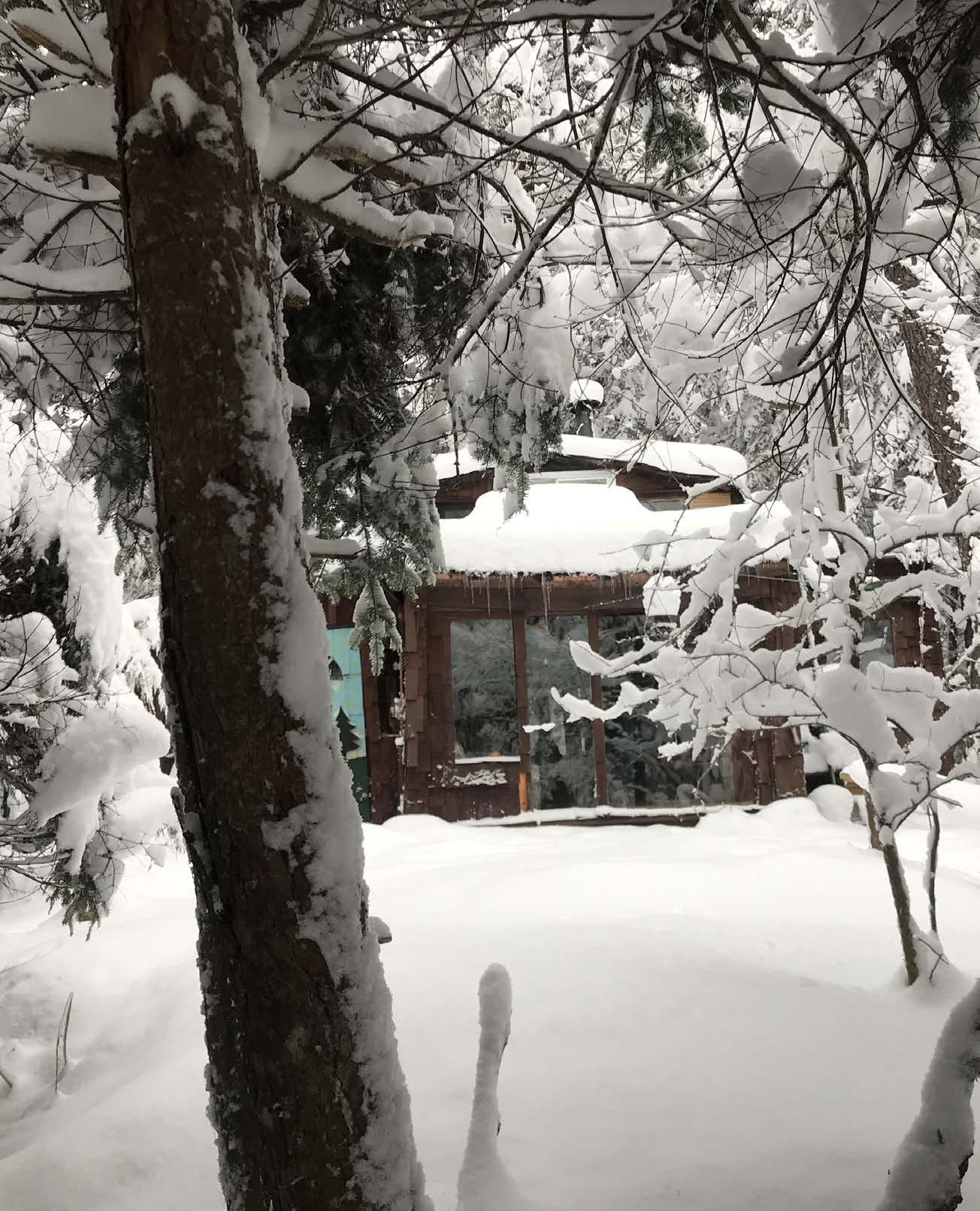 by Peggy Spencer Behrendt
by Peggy Spencer Behrendt
In 1974, Tim and Peggy Spencer Behrendt set off on an adventure. They began a new life in the woods of Cold Brook, NY, without modern conveniences like electricity or indoor plumbing. These are excerpts and reflections from Peggy’s journal chronicling their adventures and also her childhood memories growing up in Westmoreland.






Almost every day, we visit our little cottage in the woods. We couldn’t do that when we used to camp out in Florida in the winter, but now it’s only a few hundred yards from our winter home on Shawangunk Road. The trail and bridge to our little cottage in the woods overflow with snow in delicious configurations. We don’t bother to shovel but wallow through to view our dear home of 49 years, now totally embraced in cold, white, billows of silk. It seems a shame, somehow, to mar these perfect curves and soft mounds of fluff with our footprints. Tim runs his gloved hands along the handrail, creating a low swishing sound, knocking all the snow off so we have a sturdy place to grip if we slip. Afterward, though, he complains that his hands are cold.


Our cottage looks somnolent, maybe even a little sad to be devoid of the stirring of daily life, but sturdily waits for our return in spring. It seems amazing that it’s still standing since we built it out of scrap wood in 1974, two inexperienced carpenters. The



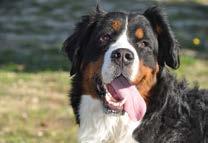

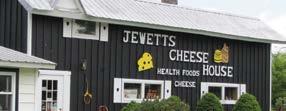
bird feeder hangs empty and barren after being the hub of avian life. The balsam, hemlock, and spruce trees that frame the little structure are heavy with great mounds of mantled snow on their boughs, but the lower bushes cradle cream puffs sprinkled about in interesting shapes. Each variety of tree and bush has a different pat tern of snowballs on its twigs.
Misty Brook is invisible beneath thick ice and deep snow, but we know that beneath the stillness secretly flows crystal clear water with a plethora of aquatic creatures resting quietly in her mud and sand. It is supremely silent here except for the crunching of our footsteps and the gentle patter of snowflakes drifting through the trees. There are no signs of intruders, and all is
an obvious disturbance in the perfection of snow beneath the huge, ancient hemlock on the way to the garden. The snow has been crushed into a somewhat circular depression and bits of leaves and ferns are peek-

ing through. Ah! It must be the bower of a deer, maybe two. Yes, here is another a little farther on.

We decide to examine the Children’s Cottage roof for snow load and must duck through sagging limbs of young balsam trees which have sprung up very close to the cottage.

I put my hood over my head, knowing that we will be knocking snow on top of us, and it can be very unpleasant landing on a bare neck.

The children have long since grown to adulthood and created their own homes, so the forest is moving closer and closer to its walls of cedar shingles, eager to reclaim the small footprint made by this cottage. Here is yet another depression in the snow beneath these young evergreens, much smaller than that made by deer. Rabbit tracks
abound, and we regret disturbing their cozy bower beneath the low branches. It’s lovely to know that our home area is providing shelter for four-footed residents (although we’re grateful they’re outside).

Of course, there are many other hearts beating here besides the birds, deer, and rabbits. Sleeping snugly in tiny dens below the frost line are chipmunks, toads, worms, bumblebees, grasshoppers, and countless other life forms breathing, sleeping, and waiting for the great awakening of spring.

Like them, we also spend more time sleeping, hibernating, and reflecting during









spending many hours of semi-consciousness intimately close, arms and legs entwined, gently changing positions, keeping each other warm and comforted by kindly companionship with physical contact.
Celebrating 51 years since our first kiss on Valentine’s Day, 1972, how grateful I am for my best friend and lifemate, Tim, for his ongoing, encouraging support of my many and eclectic interests, for loving and forgiving me through all my moods both difficult and pleasant, for helping me work through various physical and emotional problems, for our work together to create a shared vision of an alternative lifestyle and place of peace and environmental sustainability. Since our careers coincided so perfectly as minister and musician, we’ve been together practically 24/7 for all these years with only brief intervals apart. I love working with Tim, as we each do our part to accomplish a worthwhile task, whether it is conducting a church service, hauling wood, or pulling roots. These are moments filled with a sense of contentment and flow.
Occasionally I contemplate the fathomless moments that culminated in my birth; my parents’ union, my grandparents’ marriage, etc. What if one of them made a different decision at some point in their lives? Things would have turned out differently

and I wouldn’t be here. Grandma Spencer kept a journal of key events in a tiny book of inspi rational quotes. From her journal, which started in Baildon, UK, and continued in Clark Mills, NY:
1908, February 12. Our wedding day (Martha Anne Clough & Maurice Thomas Spencer)
1909 May 22, Roy was born. (First of two sons)
1910 March 26, Roy & I left England. Landed here on April 1. (The Titanic sank in April 1912)
1910 Sept. Maurice started working in (Clark) Mills’
1919 Oct 28 Roland was born. (Peg’s dad)
1925 Jan 4 Partial eclipse of the sun at 8 am almost total darkness until 9 am.
1925 Jan 30 Big snowstorm, almost all traffic stopped. No mail for a week. No trains or trolleys. No pay for almost a week. (Syra-
Be a part of a 60+ year arts organization dedicated to serving Central New York through arts-oriented programming — including exhibitions in our gallery,classes for children and adults, an annual artist residency program, and an award-winning concert series.
Executive Director, Full-time

The Executive Director is the public face and administrative leader of the Kirkland Art Center (KAC) and is responsible for overseeing the programming, operations, and finances of the Kirkland Art Center.
Program Manager, Part-time
The Kirkland Art Center is looking for an energetic, experienced, and enthusiastic Program Manager to join our team of dedicated art supporters.
If you are interested in learning more about these positions, please email Damhnait McHugh (Board President) at info@kacny.org or contact a Board member. To apply, please send resumé, cover letter, and list of references to info@kacny.org
The KAC is a non-profit organization, and only through your donations are we able to provide the high-quality programming that we are known for. As we rebuild and reopen our programs, we need your financial contribution more than ever.
by
cuse got 27.5” of snow)

1931 Roland took his first aeroplane ride at Marcy Airport.
1939 Sept 12, Roland started to work at Rome Revere
1942, Feb 17, Roy joined the Navy.
1942, April 19, Roy & Elinor were married at Elinor’s home, in Rome, NY
1942 May 5, Roland & Betty were married in Westmoreland Methodist Church

1942 October, Roy & Roland were both home for the weekend on Furlow. Had pictures taken.

1942 December 14, Maurice died in Faxton Hospital Money paid out for Maurice’s sickness & burial $1,070.91

I know that a minute change in any of these events would likely have negated my birth which causes me to deeply appreciate the remarkable gift of my being here and now. As Eleanor Roosevelt wrote: “Yesterday is history. Tomorrow is a mystery. Today is a gift. That’s why we call it ‘The Present’”



Tim has advice on how to get the most out of The Present in his “Counsel to the Winter Wea-


He writes: “The sky darkens, and the snow falls again staged with ice and chilled winds. Our hearts droop: ‘No, not again, won’t it ever stop!’ We shovel, scrape, complain and threaten. ‘Too long,

and disappointments.
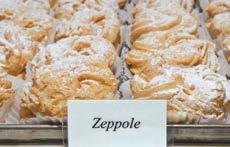
Make this day, this moment count. Dream of tomorrow but remember that dreaming is only part of the fun of today. Complain and ventilate but balance it with the effort to create new meaning now. Dream of yesterday but also be awake to:
‘This homeland is as beautiful as the homeland of our childhood.’” (The Miracle of Mindfulness, TH Hahn)

Tim continues:
“Slow down, do less, and rest, soon we will rise from our winter fatigue and mindset. And above all accept, accept, accept... .” •
How can we not waste this precious once-in-a-lifetime day of late winter? If we hurry through these days, other more pleasant times will also fly. If we find nothing here - there will be less there. Spring with its bright flowers and soft rains will also have problems - new and demanding. Spring with its warm winds and budding trees will also bring its hurts
The Shawangunk Nature Preserve is a deep ecology, forever wild, 501©(3), learning and cultural center. Tim and Peggy still live there and can be contacted through their website.

www.shawangunknaturepreserve.com

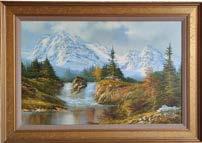




Saturday, February 11, 10:30am-1pm
217 Shawangunk Rd. Cold Brook, NY

We will embellish a sturdy gourd with colorful seed beads to create a pretty vase for a plant, pens, pencils, utensils, etc. It’s an easy craft but takes patience. We’ll have an assortment of colors to choose from. Young folks may enjoy working on it with assistance. Materials are $25. Call ahead to register 315 723-2813
“Tales from Shawangunk” Book 3 is now available for a $15 donation to SNP at Peter’s Cornucopia, The Sunflower, Little Falls Community Co-Op, and Shawangunk Nature Preserve. It also may be borrowed through Mid-York Library from the Poland Library.

EXCERPT FROM PATENTPENDING–CONVERSATIONSWITHMYFATHER
There was something I wanted to say and it was really important but It seems to have escaped me. Sometimes I feel like my zip drives are all full and that my main frame’s about to crash. They’re saying -whoever “they” are - that we’ve all got too much on our minds and have too much informa tion bombarding us from all sides. That’s the problem. Not that we neces sarily have Alzheimer’s.
“They” are also saying that there’s a new simple self-diagnostic test to let you know if you’re in the early stages of Alzheimer’s. If you can count backwards by sevens then everything’s fine.

100-93-86-79-72-65-58-51-44-37-30-23-16-9-2-minus 5.

I remember now.
Remember when I would ask you what the difference was between a Democrat and a Republican and you would say that the Republicans were for the rich guys and the Democrats were for the poor guys?
So, when I went off to college, I joined the Young Democrats Club. I have to confess to at least one venial sin and one mortal sin during my college sojourn.
First, the venial. As a young Democrat in Washington, I worked on John Kennedy’s campaign. No, that wasn’t the sin. Be patient. Let me finish. I stuffed envelopes. Thousands of envelopes. When election day finally rolled around, a friend of mine and I hopped a bus to the Mayflower Hotel and announced that we had been sent there to work on the tote board - remember those? - the huge scoreboards the election results were post ed, by hand, as they came in from around the country. We couldn’t even vote for him, but - with the exception of those election nights when my own job was on the line - it was the most exciting election night of my life. Ah, it was a long night. You and mom saw me on nationwide TV at around 4:30 am. Nixon, of course, wouldn’t concede. So we went home at eight in the morning, exhausted but exhilarated, not knowing if our idol had been elected president. The sin? No one had “officially” “sent” us to work on anything. We had “sent” ourselves. A harmless little fib.

Both my buddy and I received a letter from Senator John F. Kennedy thanking us for working on his campaign. We also received an engraved invitation to his inauguration.
The Inaugural Committee requests the honor of your presence to attend and participate in the Inauguration of John Fitzgerald Kennedy
as President of the United States of America and Lyndon Baines Johnson
as Vice President of the United States of America on Friday the twentieth of January one thousand nine hundred and sixty-one in the City of Washington
Edward H. Foley Chairman
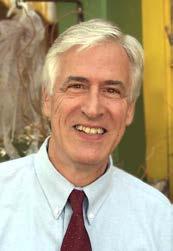
Friday, January 20th, 1961

Crisp words. Timeless words.

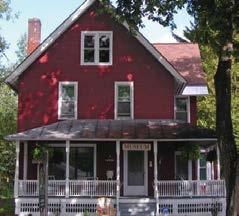

(Recites part of President Kennedy’s inaugural)


“The world is very different now. For man holds in his mortal hands the power to abolish all forms of human poverty and all forms of human life.




In the long history of the world, only a few generations have been granted the role of defending freedom in its hour of maximum danger.”

The mortal sin? I had started the weekend partying early - on Thursday night. And opted to sleep in late and not venture downtown that cold, wintry morning, Friday, January 20th, Nineteen Hundred and Sixty. College left me with another mem ory. For the first time in my life, at the beginning of my freshman year, I saw you cry as you put the car in gear and drove away from my dormitory. •

On the farm with Suzie
 by Suzie Jones
by Suzie Jones



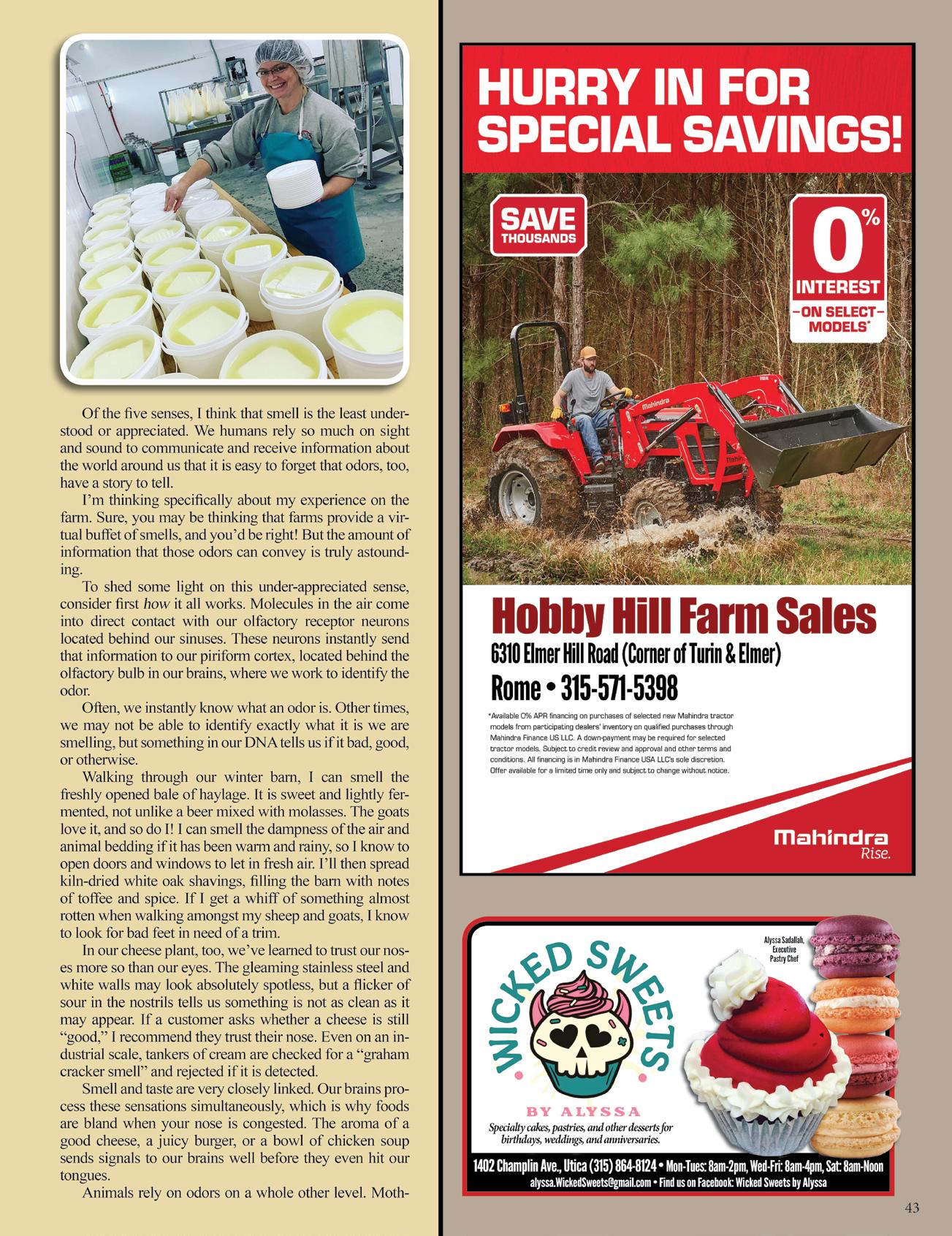
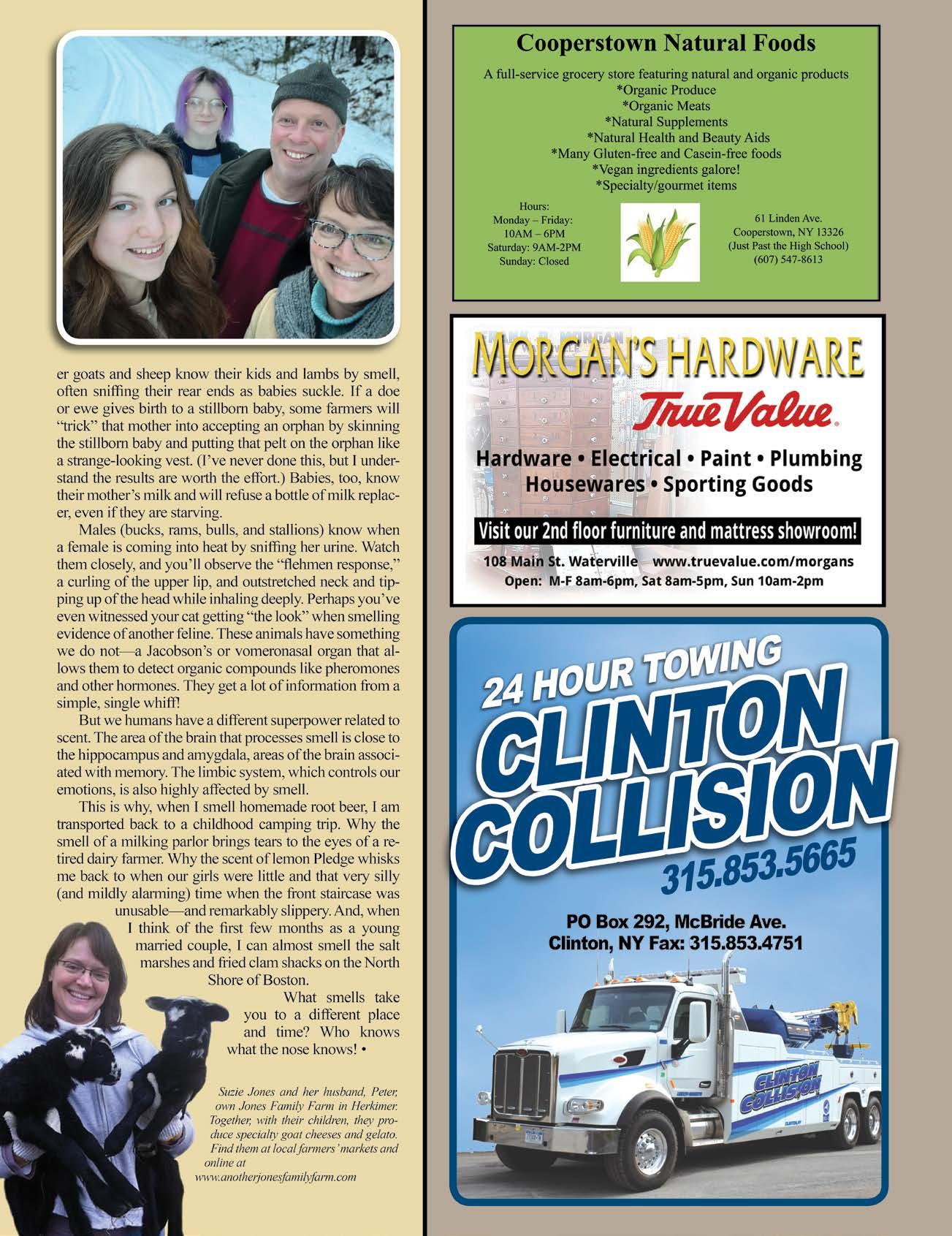


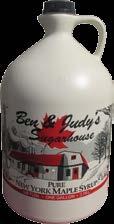
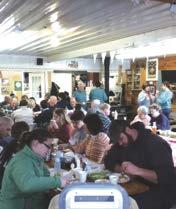

Keeping Mohawk Valley Living on the road for years!


Steet Toyota Yorkville (315) 736-8241


Steet-Ponte Mazda Yorkville (315) 927-5081
Steet-Ponte Chevrolet Herkimer (315) 866-5080



Steet Toyota of Johnstown Johnstown (518) 762-7222
Steet-Ponte Ford Lincoln Yorkville (315) 736-3381
Steet-Ponte Volkswagen Yorkville (315) 736-8291
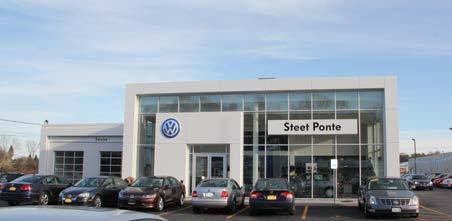
United Auto Sales Yorkville (315) 736-3361

Steet-Ponte Nissan Yorkville (315) 864-7500


www.steetponteautogroup.com

